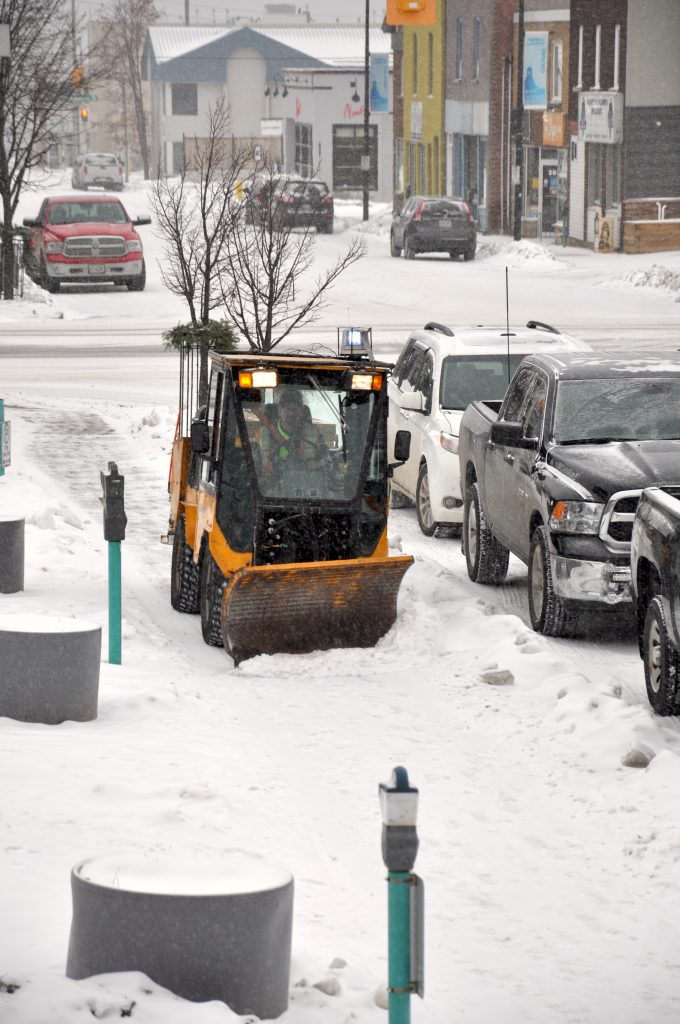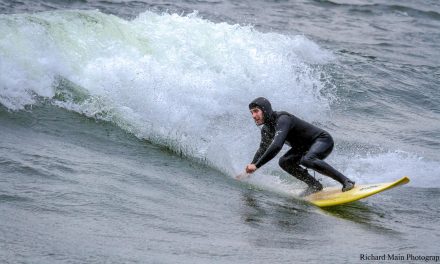The Nasty Sidewalks of Thunder Bay
By Betty Carpick

It’s lovely to welcome the endorphins that come with a walk on a sunny, cold day. But ice and snow conditions on sidewalks can wreak havoc for pedestrians. For those who walk daily or those who simply want to take a stroll for leisure or exercise, but particularly for wheelchair users, people with visible and non-visible disabilities, the elderly, and parents with strollers, taking a winter walk can be daunting.
While snow can be easy to see and provide some traction, ice is difficult to see and dangerous. Water vapour freezes on cold surfaces, forming an extra-thin, nearly invisible layer of ice. It’s really hard to assume what conditions are precarious as small amounts of ice and snow can cause disruption. Fractures, mainly to arms, wrists, hips, and ankles are far too common in snowy and icy conditions. People who are less medically well are most likely to fall and experience injury or even death. For many folks, there’s a reduced motivation to get outside to walk so they become landlocked in their homes dependent on family and friends for basic necessities. Another alternative to the risk of deplorable sidewalks is to walk on roadways. Forcing pedestrians into snow-covered streets exposes them not only to the dangers of slipping, tripping, or being injured on an icy street, but also to the vulnerability of falling in front of a passing vehicle.
As a historically vehicle-centric city with a transportation system oriented towards automobiles, clearing roads for vehicles is prioritized in Thunder Bay and occurs at the expense of access to pedestrian spaces. Snow removal crews, in their eagerness to remove the snow from the roads and get the job of sidewalk maintenance done, often create more problems for pedestrians by limiting and/or restricting access to sidewalks. Why can’t the benefits of walking as a healthy, inclusive, and sustainable mode of transportation be better supported? Why doesn’t the safety of pedestrians take precedence over all other modes of transportation?
In the joint City of Thunder Bay, Lakehead University, and Thunder Bay District Health Unit’s 2017 Walkability and Pedestrian Safety in Thunder Bay Report, respondents of the Satisfaction with Walkability and Safety Survey were strongly dissatisfied with the level of ice and snow removal from sidewalks in the winter. Close to half of respondents (46.8%)—the most common survey response—said that the municipal government should prioritize their efforts aimed to improve walkability and pedestrian safety in Thunder Bay with sidewalk snow clearing improvements. After a little online digging it’s still difficult to verify if there’s been any direct action to support this critical community feedback.
What can be done besides being vigilant about personal choices of where, when, and how to walk? Start by encouraging our municipal government to exercise responsibility with sidewalk clearing improvements. Advocate for effective sidewalk snow plows (the ice-crushing, multi-pronged hatch blade new to Ottawa’s sidewalks looks impressive!) and regulate the amounts of salt, sand, and grit to ensure that sidewalks are open and safe. The Walkability and Pedestrian Safety report states, “When cities plan for transportation modes other than motor vehicles, modify the built environment to enhance walkability, and prioritize the safety of vulnerable road users, communities become vibrant, safe, healthy, and connected.” It’s a really slippery slope when a northern city can’t get a grip on being a year-round walkable community.













